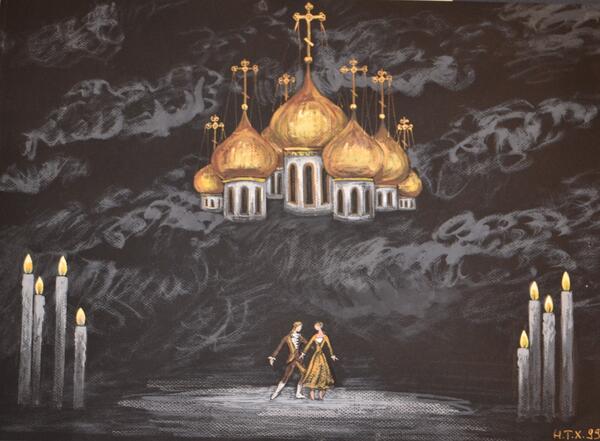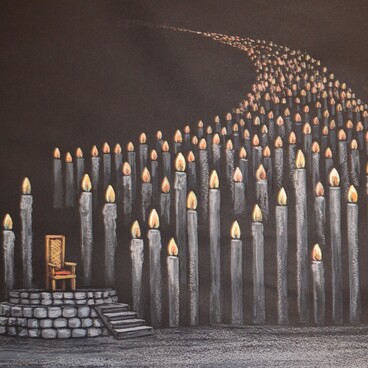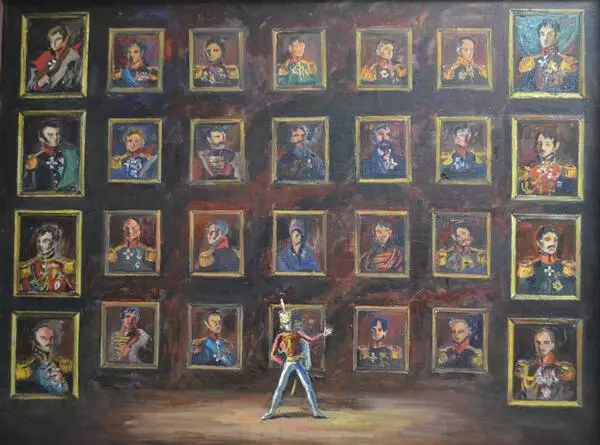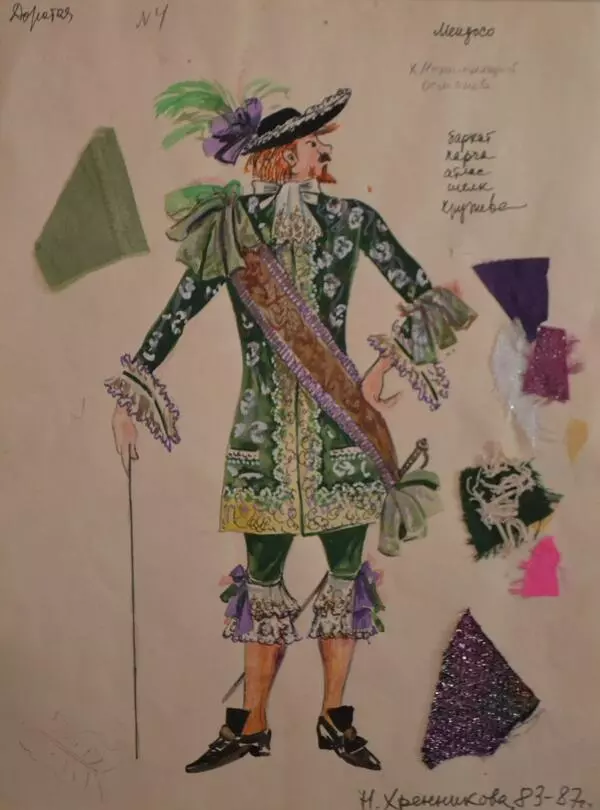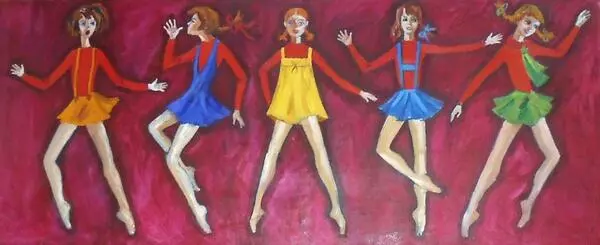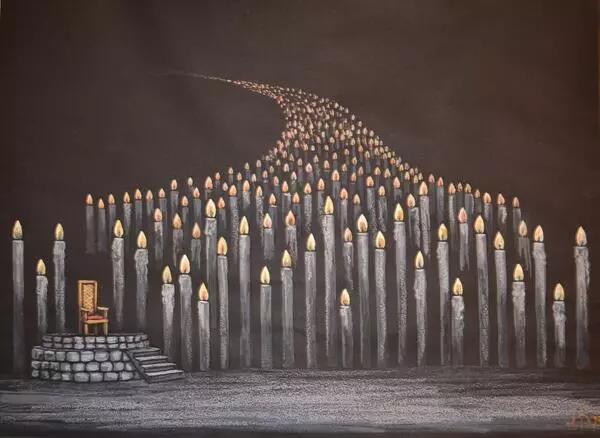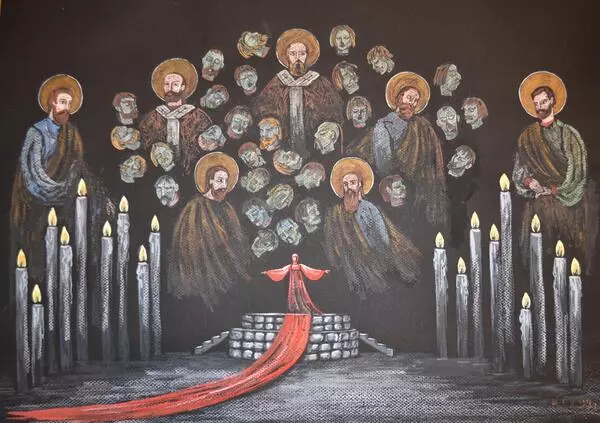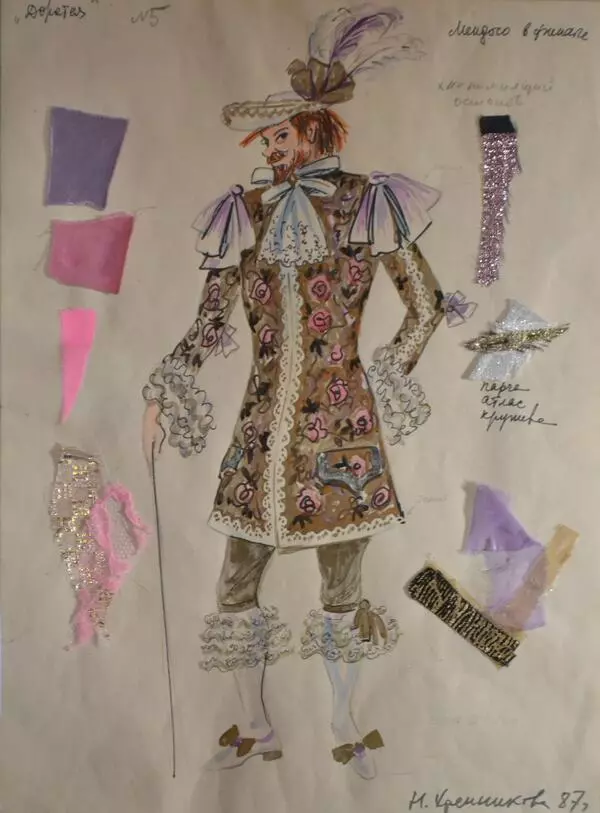The sketch of decors for the final scene of the ballet “The Captain”s Daughter” was made by the theatre designer Natalia Khrennikova, the composer’s daughter. The plot is based on the Alexander Pushkin’s story “The Captain”s Daughter” about the Pugachev rebellion and the historical events of the 70s of the 18th century. The ballet was staged in 1999 for the 200th anniversary of the author.
The story “The Captain”s Daughter” is one of the last and most famous works of Pushkin. It was enthusiastically greeted by critics and readers. Nikolay Gogol wrote: “Compared to “The Captain”s Daughter”, all our novels and stories seem to be sugary scum…’ Composers wrote four operas on this plot, and directors shot several film adaptations in the USSR, France and Italy.
For the first time, Khrennikov turned to Pushkin’s story in 1958 — he was asked to write the music for the film of the same name directed by Vladimir Kaplunovsky. The main role was played by Oleg Strizhenov. The film met with a box office success and won the Golden Sail prize at the Locarno Film Festival (Italy).
41 years later, the composer again drew attention to the work of Pushkin. By that time Khrennikov had a great experience of working with ballet — “Love for Love” and “Hussar Ballad” were successfully performed on the stages of many theaters.
“The Captain”s Daughter” ballet premiered at the Omsk State Musical Theater in June 1999 In October of the same year, the ballet was staged in Moscow at the Children’s Musical Theater named after N. Sats.
In 2003, on the occasion of the composer’s 90th birthday, director Vitaly Butrimovich staged the performance on the theater stage in Nizhny Novgorod. The performance was designed by the theater designer Natalya Khrennikova. Sketches of her works are placed in the house-museum.
Khrennikov had his own view of ballet. “Always admiring the art of ballet, I was often dissatisfied with its sometimes one-sided development — I mean the tragic nature of the plots that were used as the basis for ballet performances. Without rejecting this at all, I wanted to see festive, joyful, brilliant performances on the ballet stage, bringing beauty and inspiration to people. » The plot of “The Captain”s Daughter” was suitable for such a performance: the blind impulse of popular rebellion and court balls, intrigues and duels and, of course, a happy love story — all this became the basis for beautiful melodies.
The story “The Captain”s Daughter” is one of the last and most famous works of Pushkin. It was enthusiastically greeted by critics and readers. Nikolay Gogol wrote: “Compared to “The Captain”s Daughter”, all our novels and stories seem to be sugary scum…’ Composers wrote four operas on this plot, and directors shot several film adaptations in the USSR, France and Italy.
For the first time, Khrennikov turned to Pushkin’s story in 1958 — he was asked to write the music for the film of the same name directed by Vladimir Kaplunovsky. The main role was played by Oleg Strizhenov. The film met with a box office success and won the Golden Sail prize at the Locarno Film Festival (Italy).
41 years later, the composer again drew attention to the work of Pushkin. By that time Khrennikov had a great experience of working with ballet — “Love for Love” and “Hussar Ballad” were successfully performed on the stages of many theaters.
“The Captain”s Daughter” ballet premiered at the Omsk State Musical Theater in June 1999 In October of the same year, the ballet was staged in Moscow at the Children’s Musical Theater named after N. Sats.
In 2003, on the occasion of the composer’s 90th birthday, director Vitaly Butrimovich staged the performance on the theater stage in Nizhny Novgorod. The performance was designed by the theater designer Natalya Khrennikova. Sketches of her works are placed in the house-museum.
Khrennikov had his own view of ballet. “Always admiring the art of ballet, I was often dissatisfied with its sometimes one-sided development — I mean the tragic nature of the plots that were used as the basis for ballet performances. Without rejecting this at all, I wanted to see festive, joyful, brilliant performances on the ballet stage, bringing beauty and inspiration to people. » The plot of “The Captain”s Daughter” was suitable for such a performance: the blind impulse of popular rebellion and court balls, intrigues and duels and, of course, a happy love story — all this became the basis for beautiful melodies.

